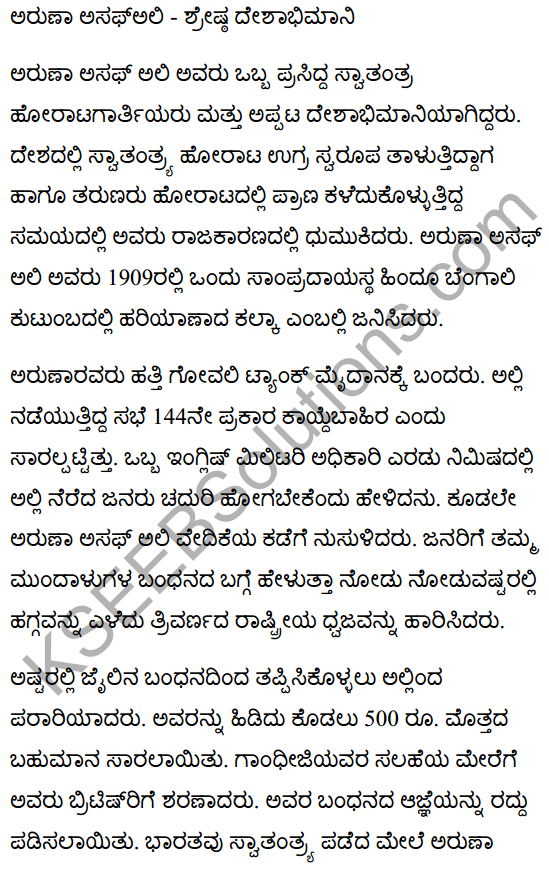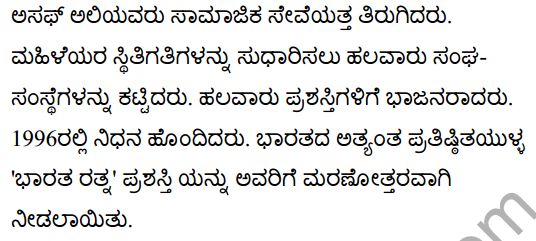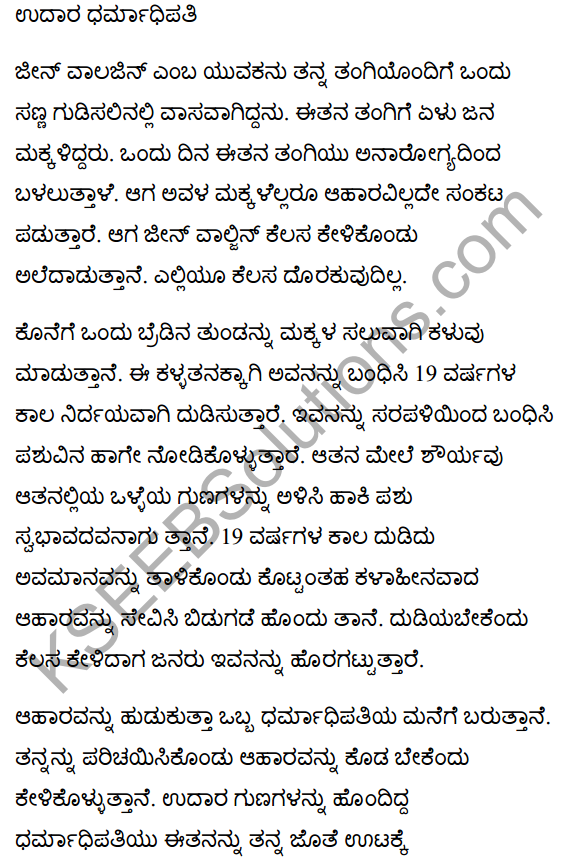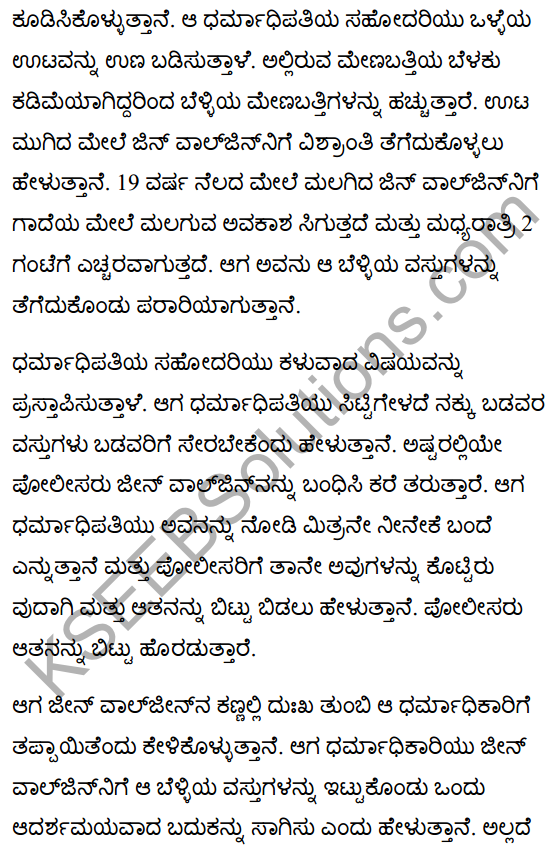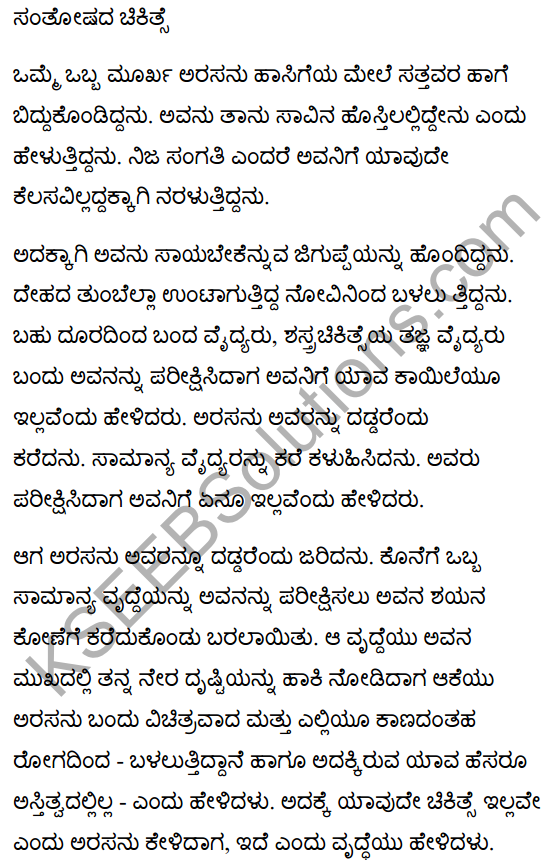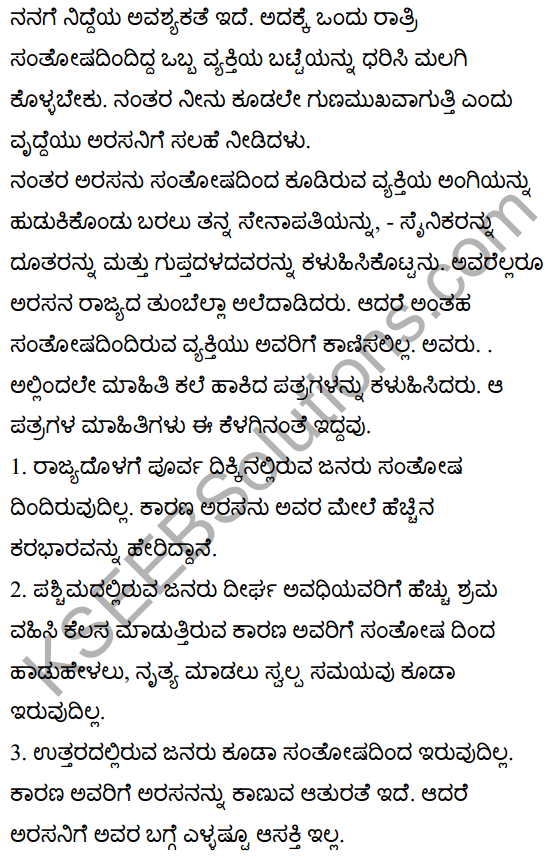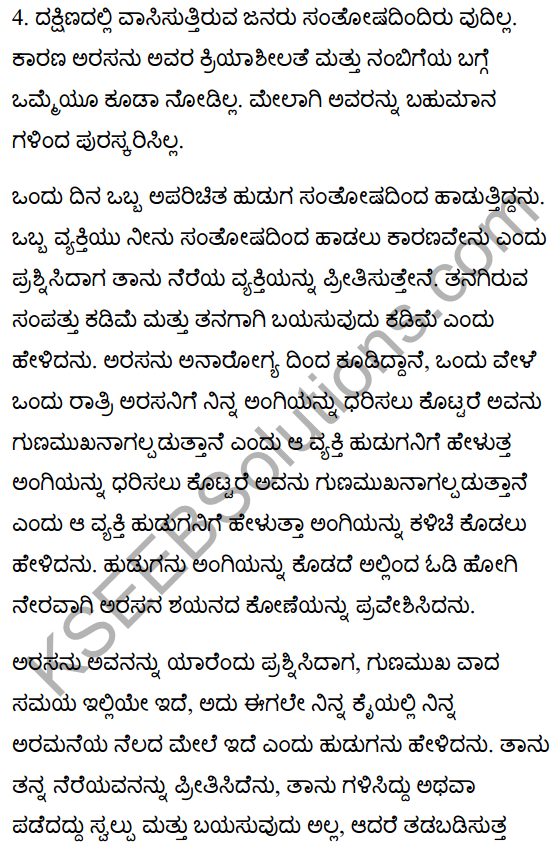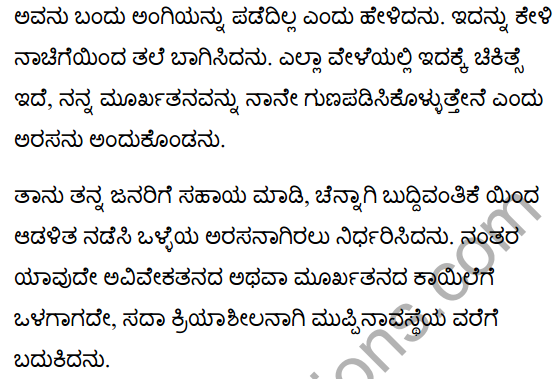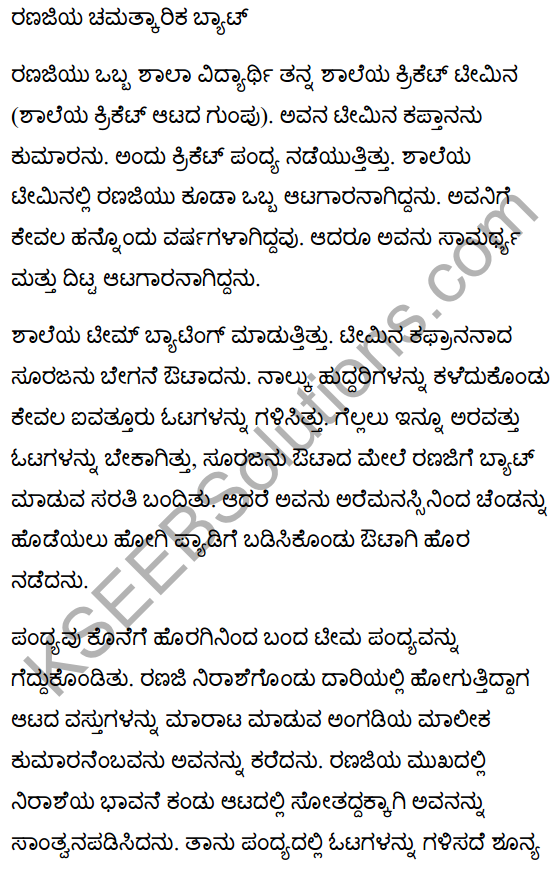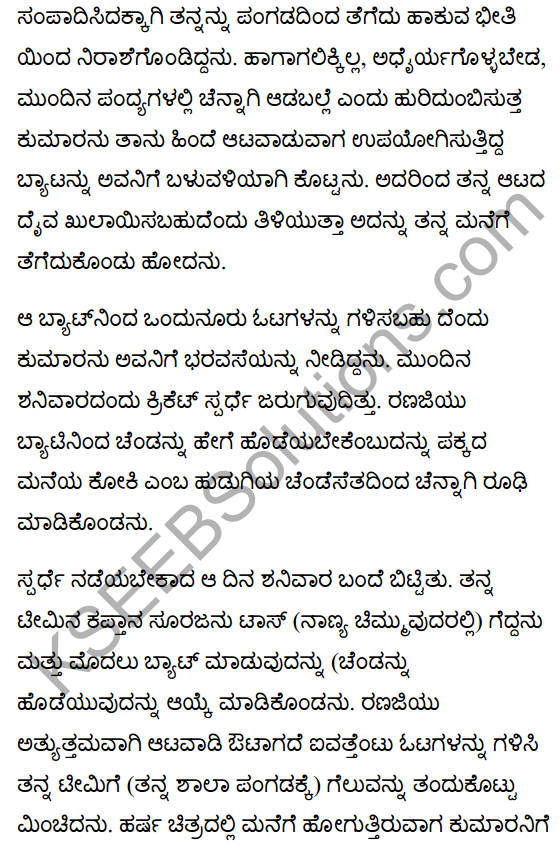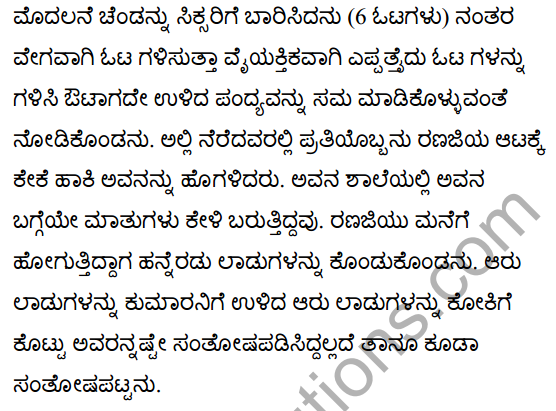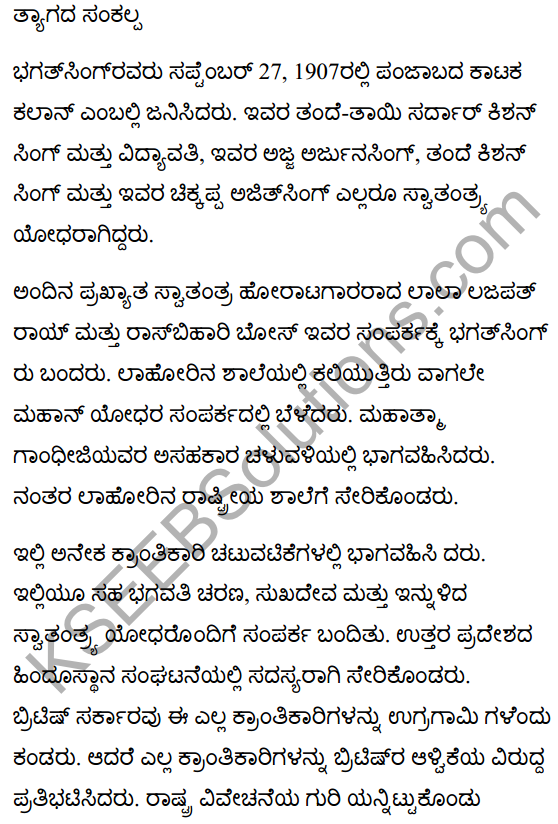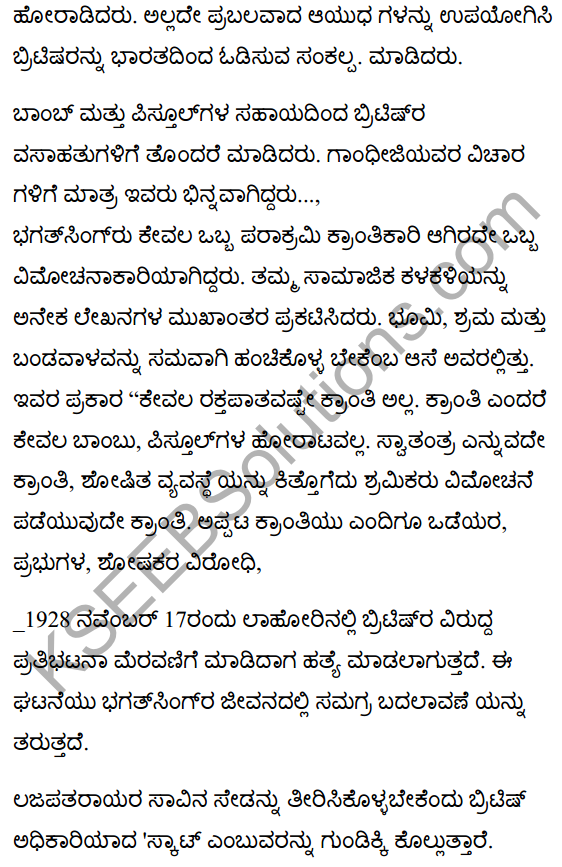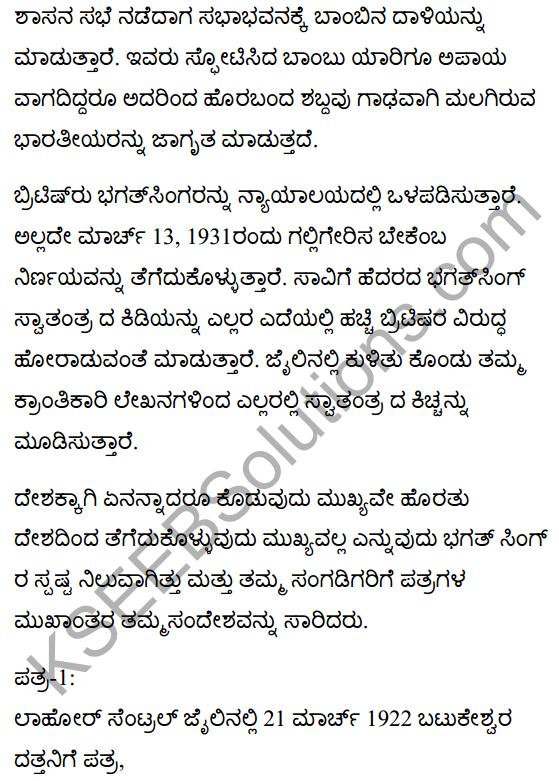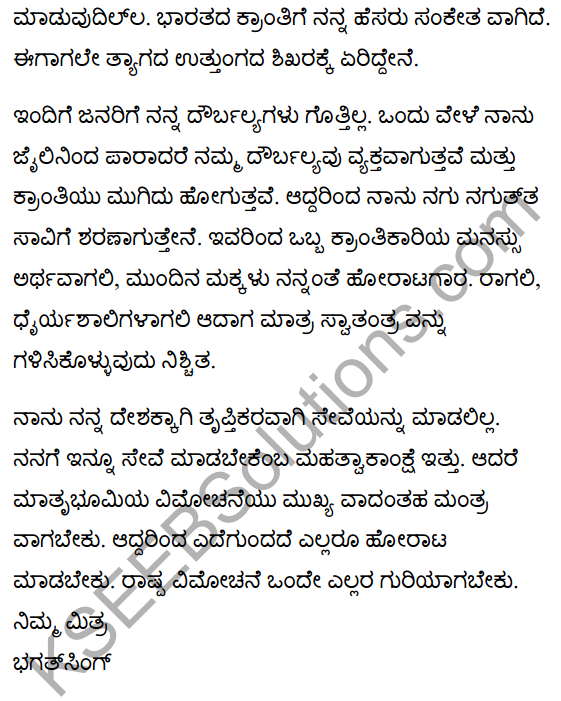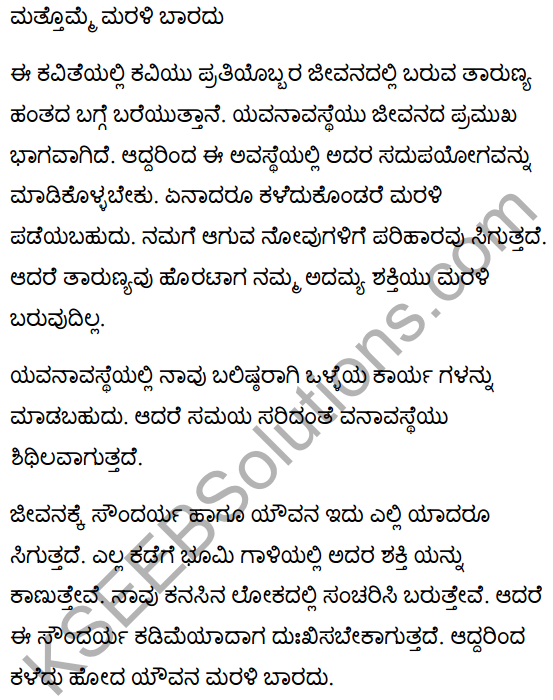By understanding the academic needs we have prepared the Karnataka State Board English Class 9 Solutions Chapter Wise. Our aim is to help the students by providing the question and answers chapter wise and help them to gain a good score in the exams.. Before you start your preparation go through the chapters covered in this academic. So go through them and Download KSEEB Solutions for Class 9 English Chapter 8 To My Country Men Question and Answers Pdf for free.
To My Country Men Questions and Answers, Notes, Summary
The topics covered in Karnataka Secondary Education Examination Board Class 9 Solutions for English Chapter 8 To My Country Men. The KSEEB Solutions Class 9 English Solutions Chapter 8 To My Country Men Question and Answers are prepared according to the latest edition.The Chapterwise page will help the students to revise the syllabus during the exams.
Check Your Understanding:
A) Answer the following questions based on your reading of the passage:
Question 1.
What according to Dr. Kalam is important in life to become a winner?
Answer:
According to Dr. Kalam creative process or power or the power of imagination is important in life to become a winner.
Question 2.
Which is bigger, the individual or the organization?
Answer:
Missions are always bigger than organizations and these organizations are always bigger than the individuals who run them.
Question 3.
What can be achieved by working together?
Answer:
By working together we can provide facilities at reasonable prices.
Question 4.
‘It helped us humble a mighty empire’ who does the phrase migty empire refer to?
Answer:
The mighty empire refers to the British Empire who ruled us earlier.
Question 5.
What will happen if we have a low aim?
Answer:
If we have a low aim, we cannot demonstrate that “India can do it”, we cannot revive the spirit of enterprise, we cannot compete with other developed countries and we will remain isolated from development.
Question 6.
What is Dr Kalam’s view on the good progress we have made in the software sector?
Answer:
India has progressed in the software sector but almost all of the hardware is imported and we should produce our own hardware. India should design an operating system that will become a household name in the world of computers. It is Dr. Kalam’s view on the good progress we have made in the software sector.
Question 7.
Mention the states that are faring better than others in the country?
Answer:
The states of Tamilnadu, Andra Pradesh, Punjab and Karnataka are faring better than others in our country in areas of education and health.
Question 8.
Which state is rich in mineral wealth and natural gas?
Answer:
Tripura state is rich in mineral wealth and natural gas.
Question 9.
Where do you see insurgency and unrest among people?
Answer:
We can see insurgency and unrest among people in the state of Assam.
Question 10.
Match the following:
Answer:
| A | B |
| 1. AcharyaP.C. Ray | c) The chemical and pharmaceutical industries |
| 2. J. N. Tata | d) the Indian Institute of Science, Bangalore |
| 3. Sir Syed Ahmad Khan | b) Aligarh Muslim University |
| 4. Pandit Madan Mohan Malaviya | a) The Banaras Hindu University |
B. Discuss the following questions in small groups, present your answers orally and then write them down in your notebook:
Question 1.
What do people expect from biotechnology labs and medical councils?
Answer:
People expect proper diagnostic facilities in clinics and affordable drugs from the biotechnology labs and medical councils. They should provide advanced medical facilities and make these available to the people at reasonable prices.
Question 2.
What is Dr Abdul Kalam’s vision of India in 2020?
Answer:
We should manufacture cars dotting the roads in Seoul. We should build power stations for the USA, Japan and China. India should design an operating system that will become a household name in the world of computers. India should manufacture and market battle tank, missiles, aircrafts, guns and other equipment. Students should get ready to transform India into a developed nation.
Question 3.
How did great people such as j.N Tata, sir Syed Ahanlad khan etc. help India come up in the word?
Answer:
Tata brought the steel industry to India during British rule. Acharya P.C ray developed the chemical and pharmaceutical industries. Madan Mohan Malaviya started Banaras Hindu University and Syed Khan started Aligarh University. Their main intention was to see India come up in the world.
Question 4.
As mentioned in the lesson, what is it that we have? What is it that we don’t have?
Answer:
We have hundreds of defence production industries. We have the most important core competence in the form of our multifaceted manpower and basic infrastructure. But we are not manufacturing and marketing the main battle tanks, missiles, aircraft, guns, and other defense equipment.
We have to give a new dimension to our style of functioning of the various ministries and even industries and institutions should follow an integrated action plan. The . motive force has to be love for the country. We need a vision that is shared by the entire nation.
Question 5.
What is his message to the teachers and students?
Answer:
Teachers should be there to motivate the students and show then the way to think big, to think progressively and to think for the nation’s future. Students should get ready to transform India into a developed nation. Students should ignite their minds and think big.
A teacher should be ready to completely transform a five-year-old child because, after seven years, no God or Devil will be able to change the child.
Question 6.
What is lacking in the discussions and debates that take place in intellectual forums, political platforms and academic institutions?
Answer:
Our Intellectual Forums, political platforms, academic institutions, and Chambers of Commerce are all full of discussions and debates. There is noise, a lot of it in fact. There are endless debates, arguments, hypotheses, theories, and yet there is little progress. However, the theme of a developed India is not discussed in boardrooms and technology conferences. It should be done by every individual, at every level to take full responsibility.
Vocabulary
Question 3.
Collocations
A) Words often used together are called collocations. For example, the word‘heart’ is often used with ‘congratulations’ and we say ‘Hearty congratulations!’
In the following table, match the words that collocate and write them down.
1. noble – responsibility
2. make – satellites
3. manufacture – challenges
4. launch – power
5. generate – cars
6. face – nation
7. take – leaders
8. developed – efforts
Answers:
1. noble – leaders
2. make – efforts
3. manufacture – cars
4. launch – satellites
5. generate – power
6. face – challenges
7. take – responsibility
8.develop – nation.
B. There are some words in Box A and some prepositions in Box B. Which prepositions can be used with which words? Write the word combinations.
| Box A | Box B | Answers |
| dream convert consist basis willing speak give birth worthy have |
about of to for into |
dream of convert into consist of basis of willing for speak about/of give birth to worthy of have access to |
Quiz
The conjunctions used in the following sentences are wrong. Replace them with the most appropriate ones. Choose from the options given in brackets.
Answer:
1. I will go to bed now, and my homework is not done.
2. Would you like to have tea or coffee?
3. My sister wants both a bicycle in addition a book for her birthday.
4. Ramya is very tall while Parveen is very short.
5. I came early so that. I can talk to you personally.
6. Whenever she calls me, 1 feel happy.
7. Once the class starts, you will not be able to play.
8. Although I had seen that movie three times, I watched it again.
Quiz
Choose appropriate modals from the table above and complete the sentences.
Answer:
1. Can you speak Chinese? No, I can’t.
2. I must study well for the exam.
3. May I borrow you pen?
4. We should not watch TV so much.
5. We must not buv that bag. It’s expensive.
6. You should come to school in time.
7. I need to work hard to complete the project.
8. You may speak politely to others.
Modals are also used for different communicative functions. They are used for requesting, for seeking permission, for inviting, for advising, etc. The following is a list of functions and the corresponding modals.
| Requesting | Can you please carry this bag? Will you open the book at page 23, please. |
| Asking for permission | May I go out now Can I sit here? |
| Advising | You should consult the doctor immediately. |
| Inviting | Shall we have a cup of coffee? Would you like to join us? |
To My Country Men Additional Questions and Answers
Choose the correct answer:
Question 1.
“To my Countrymen” is an extract from Dr. A.P.J. Abdul Kalm’s book:
(a) Ignited Minds
(b) Wings of fire
(c) India 2020
(d) A vision for the new millennium.
Answer:
(a) Ignited Minds.
Question 2.
Kalam dreams of an India governed by:
(a) Scientists
(b) President
(c) a Noble leader
(d) Foreigners.
Answer:
(c) a Noble leader
Question 3.
According to Dr. Kalam, to realise the dream, _________ is necessary
(a) Industry
(b) Agriculture
(c) Science
(d) Integrated effort.
Answer:
(d) Integrated effort.
Question 4.
The steel industry was brought to India by:
(a) J. N. Tata
(b) P. C. Ray
(c) Madan Mohan Malavia
(d) Sardar Patel.
Answer:
(a) J. N. Tata
Question 5.
We need a vision that is shared by the:
(a) Politician
(b) farmers
(c) Entire nation
(d) entire world.
Answer:
(c) Entire nation
Question 6.
The state that is rich in mineral wealth and natural gas is:
(a) Assam
(b) Jharkhand
(c) Tripura
(d) West Bengal.
Answer:
(c) Tripura
Question 7.
The state that is facing insurgency and unrest among its people is:
(a) West Bengal
(b) Assam
(c) Tripura
(d) Jharkhand
Answer:
(b) Assam
To My Country Men Summary in English
“To My Countrymen’’ is an extract from Dr. A.P.J Abdul Kalam’s book called “Ignited Minds” and in this book, he has spoken about the power of imagination. It lies at the heart of the creative process and it is the very essence of life. This power makes all the difference between the winners and the losers. Dr Kalam would like to see a literate and poverty-free India in the span of 20 years.
He dreams of an India governed by noble leaders in which the work of scientists and technologists is focused. According to Dr Kalam creative process or power or the power of imagination is important in life to become a winner.
Missions are always bigger than organizations and these organizations are always bigger than the individuals who run them. Missions require effort and the mind provides the. purpose. To prove this, he gives examples. Isolated efforts do not achieve anything but by working together we can do wonders.
The second green revolution cannot happen without agricultural scientists, biotechnologists and irrigation experts. By working together we can provide facilities at reasonable prices.
According to him power is the basis towards excellence. Pre-independence India reverberated with it. It helped us to lower the importance of mighty empire. The mighty empire refers to the British Empire who ruled us earlier. During the rule of British Tata brought the Steel Industry to India. Acharya P.C Ray developed the chemical and pharmaceutical industry. Many great institutions came to light.
Pandit Madan Mohan Malviya established Banaras Hindu University and Sir Syed Ahamed Khan set up Aligarh Muslim University. Their motivation was to see India come up in the world. But today we are not in a position to continue that work and revive the spirit. Our country cannot build power stations for the USA, Japan and China. The possibility is remote. If we have low aim the spirit of enterprise will diminish and can’t achieve anything.
In the software sector, we have good progress. But almost all of the hardware is imported. We can’t rise on the value scale. India cannot design an operating System that will’become a household name in the world of computers.
The raw materials such as iron ore and alumina are exported to a larger extent. But we don’t find an international market. Our country has hundreds of defense production Industries but India is not manufacturing battle tank, missiles, air crafts and other equipment.
The reason for all this is we are not in a position to give a new dimension to our style of functioning.
The individual interests of various ministries and even industries including institutions do not follow the integrated action plan. Love for the countiy should be our motto and vision. Karnataka, Tamil Nadu, Maharastra, Andra Pradesh are the states faring better than others in the country. The IT sector requires man power. Those living away from the cities must also have access to a good education.
Dr Kalam visited north eastern states Tripura, Assam and to Jharkhand. He came to know the untapped potential. Tripura is rich in mineral wealth and also in natural gas. But the transport facilities are not good because of isolation. Even in Jharkhand it is a same.
There is no shortage of resources in Assam but there is unrest among people. To integrate people, we need a focused mission and to channel development funds for improvement. Tripura is rich in mineral wealth and in natural gas. We see insurgency and unrest in Assam. Our organizations are full of discussion and debate. There is only noise.
There is little progress. We don’t see the technology conferences so Dr Kalam asks the organizations to take full responsibility and to stop blaming others. Then only we can enjoy the benefits. He asks of the students to get ready to transform India into a developed nation. He says proudly, “Ignite your minds and think big”. He remembers the saying of a teacher who said, “Give me a five-year-old child. After seven years, no god or devil will be able to change the child”.
To My Country Men Summary in Kannada
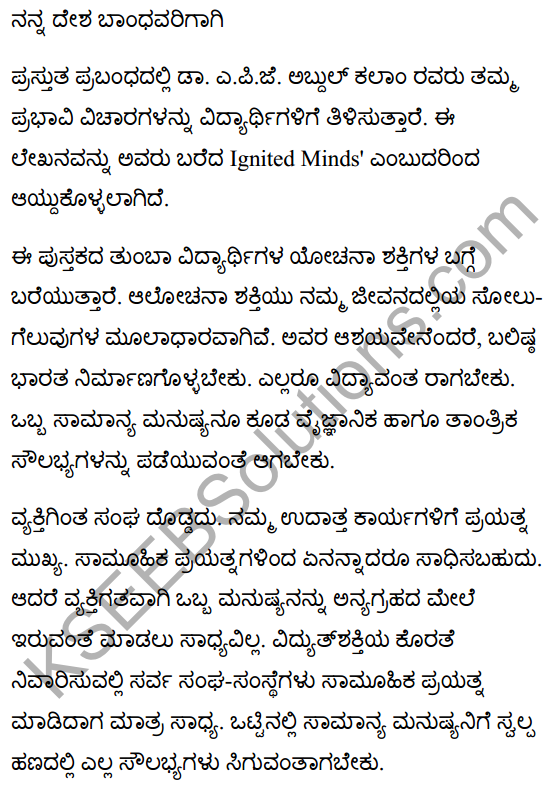

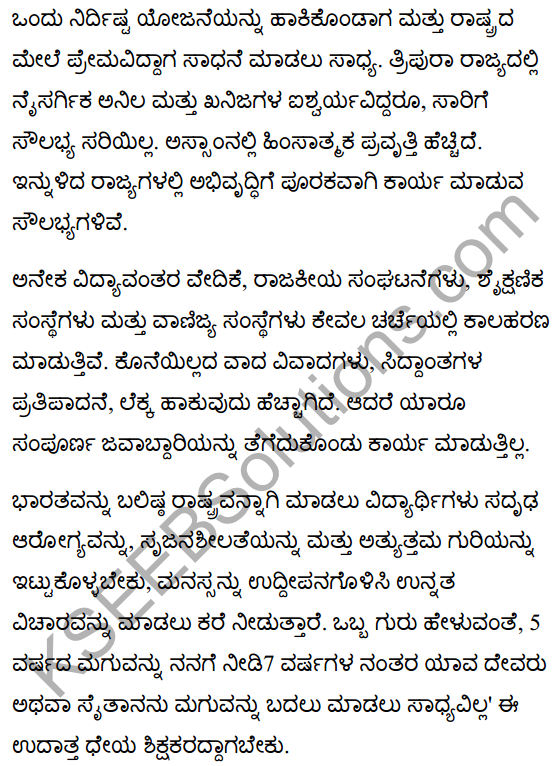
We hope the information prevailed in this article is helpful for all the students of Class 9. The Karnataka State Board Solutions for Class 9 English Chapter 8 To My Country Men Question and Answers pdf enhance your skills and score good marks in the exams. Stay tuned to get the latest information about the KSEEB Solutions Class 9 English Solutions.
